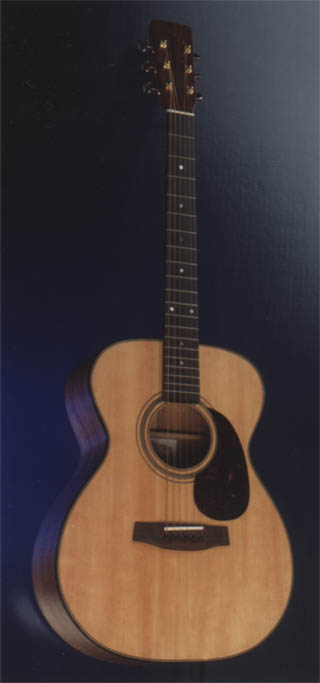
(Image reproduced courtesy of Gilet Guitars) |
Like most steel-string guitars, the fingerboard of this model joins the body at the fourteenth fret.
The sound produced generally accentuates higher frequencies than their nylon-stringed counterparts, and a range of styles tend to be played on the steel-stringed guitars. Players often utilise accessories such as plectra, slides, capotastas, or fingerpicks on these types of guitars.
General characteristics of steel-string guitars (with respect to nylon-stringed varieties) include:
- Less rotund body, and slightly more elongated.
- The fingerboard meets the body at the 14th fret.
- Reasonably slim fingerboard (~40mm at the body.)
- Top two* strings are metal wire**, the bottom four consist of wire wrapped in a tight helix*** about a wire core.
- Usually has an asymmetric strut bracing geometry.
|

